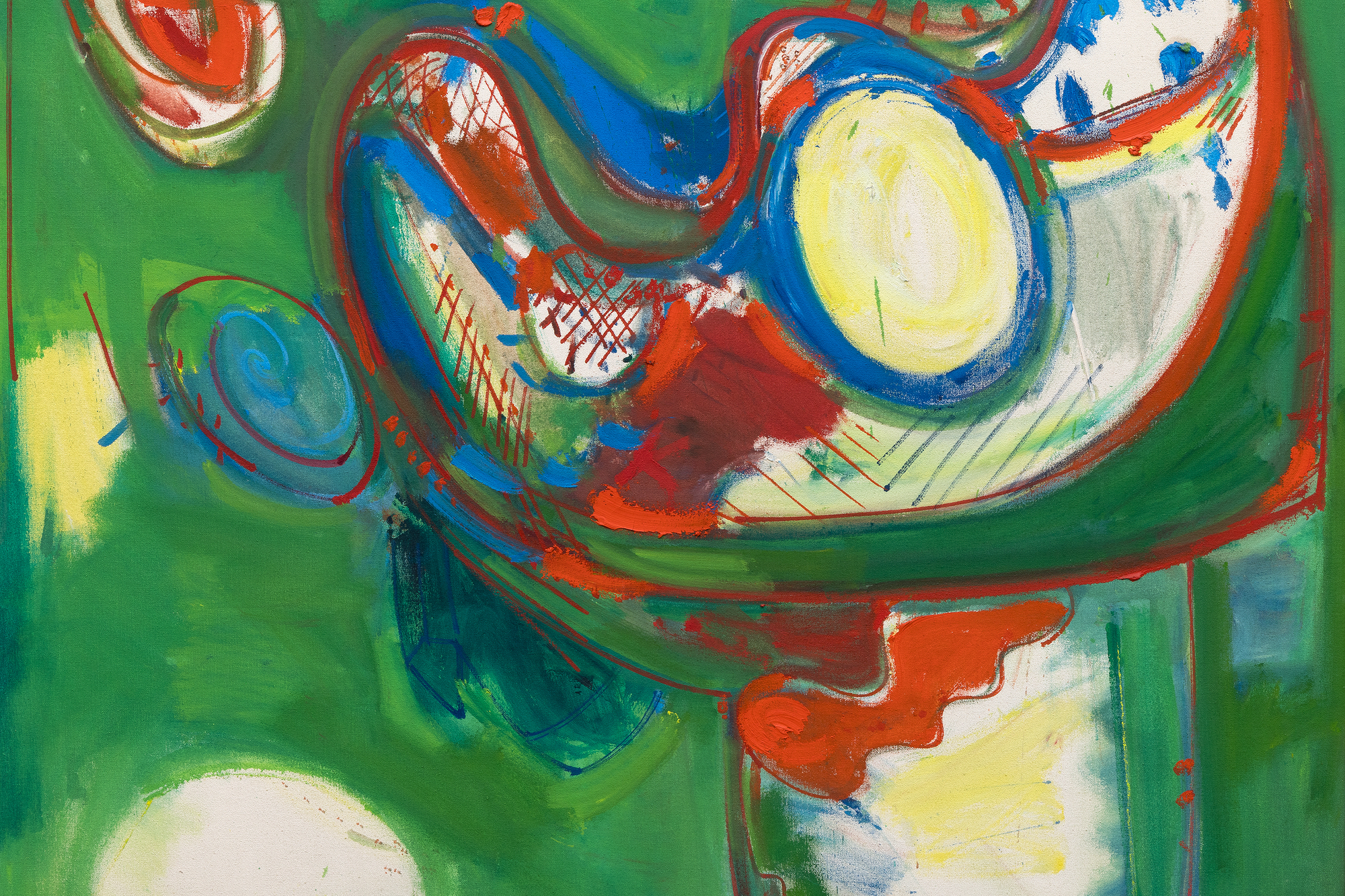هانس [هوفّمنّ][نبسب](1880-1966)







الاصل
معرض أندريه إيميريتش، نيويوركتركة هانز هوفمان
أميرينجر ويوهي للفنون الجميلة، نيويورك
مجموعة خاصة، نيو جيرسي
معرض
نيويورك، نيويورك، معرض بيتي بارسونز، معرض هانز هوفمان: الأعمال الحديثة، 24 مارس - 12 أبريل 1947، باسم فينيكس الثالثسانت بول، مينيسوتا، معرض ولاية مينيسوتا، باسم فينيكس الثالث، 1947
باريس، غاليري مايجت، هانز هوفمان، لوحات فنية، 7 يناير - 9 فبراير، 1949
نيويورك، نيويورك، معرض أندريه إيمريتش، معرض أندريه إيمريتش، هانز هوفمان: سنوات ما بعد الحرب: 1945 - 1949، 12 يناير - 18 فبراير 1989
نيو يو... اكثر...rk، نيويورك، أميرينجر يوهي، هانز هوفمان: اللاوعي بلا خجل؛ تأملات في هوفمان والسريالية، 30 مارس - 29 أبريل 2006
الادب
معرض أندريه إميريتش، هانز هوفمان: سنوات ما بعد الحرب: 1945-1949، نيويورك، نيويورك، 1989، لوحة رقم 5 (مصورة بالألوان)جيد بيرل، هانز هوفمان، اللاوعي بلا خجل: تأمّل في هوفمان والسريالية، نيويورك، 2006، ص 36 (مصور بالألوان)
سوزي فيليجر، هانز هوفمان: كتالوج ريزون للوحات، المجلد الثاني، ساري، 2014، HH cat. no. 1137-1947، ص 392 (مصور بالألوان)
... اقل...
رسمت لوحة "بعل" في سن الخامسة والستين، وهي تُظهر أيضاً رغبة هوفمان في إعادة النظر في التخصصات السابقة مع مواجهة تحديات التجريد في منتصف القرن. وتزيد لوحة الألوان النابضة بالحيوية والاستخدام الجريء للألوان التكميلية، لا سيما تجاور اللونين الأحمر والأخضر، من ديناميكية اللوحة. كما يعكس عمله العضلي بالفرشاة أيضاً تجربته الدائمة مع التوتر بين الشكل والحرية؛ فالخطوط المتموجة والأشكال الحيوية تستحضر التأثير السريالي لميرو والصدى الروحي لتجريدات كاندينسكي الإيمائية. وعلى غرار هؤلاء الأسلاف، سعى هوفمان إلى ترجمة "الضرورة الداخلية" إلى تعبير بصري، مسترشداً بخياله الخصب. ومع ذلك فإن العناصر المستوية والأشكال المنحنية في لوحة "بعل" تعكس أيضاً تأثير الرسم الارتجالي، وهي سمة مميزة للتعبيرية التجريدية كما مارسها معاصرون مثل أرشيل غوركي وغيره. إنها تركيبة تعج بالحركة والطاقة، مما يوحي بأن الكون في حالة تغير مستمر - فوضوي ولكنه مدروس.
عُرضت لوحة "بعل" في العام نفسه في معرض بيتي بارسونز في نيويورك، وهي تشير إلى تطور هوفمان كمبدع ومبتكر. تجسّد اللوحة بديناميكيتها النابضة بالحياة وعنوانها الرمزي قدرة هوفمان على إضفاء قوة تجريدية على العناصر، وصياغة استكشاف شخصي عميق للشكل واللون.


